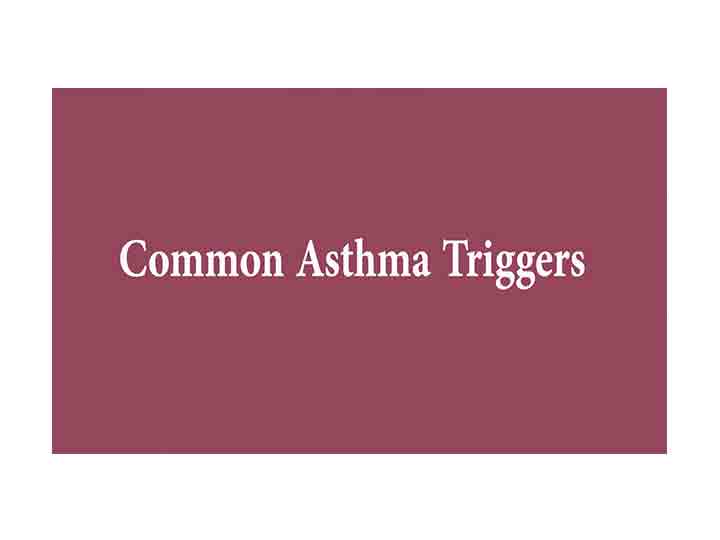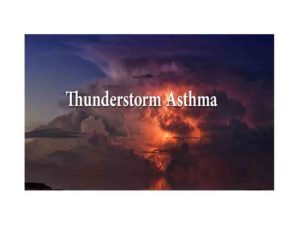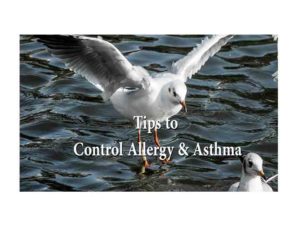Common Asthma Triggers
Asthma is a chronic condition that causes inflammation and narrowing of the bronchial tubes.
Asthma Symptoms include
Coughing
Shortness of breath
Chest tightness
Wheeze
Asthma triggers include substances which will trigger asthma symptoms. These include both irritants and allergens.
COMMON ASTHMA TRIGGERS
Animal Secretions
Animal Secretions are important source of allergen which can trigger asthma symptoms. Secretions from cats, dogs, horses, rabbits and other furry animals act as allergens.
Avoidance Measures:
- Remove pet from the home.
- Limit exposure to the pet.
- Bathe pet regularly; delegate when possible.
- Vacuum floor and furniture thoroughly.
- Remove carpets if possible.
Cockroaches
Cockroaches are common insects that can be found anywhere in the home, school or workplace.
Avoidance Measures:
-Remove garbage from kitchens and bathrooms.
- Clean up all food crumbs or spilled liquids immediately.
- Wash dishes, cooking equipment and counters promptly after use.
- Keep counters, sinks, tables and floors clean and clear of debris.
- Seal cracks and openings around or inside cabinets.
Dust mites
Tiny microscopic creatures that feed on the flakes of skin that people and pets shed daily.
Dust mites are found in humid, warm areas. There are large concentrations in bedrooms (pillows, blankets, carpets etc).
Avoidance Measures:
- Maintain relative humidity level <50%.
- Use vacuum with HEPA filter.
- Encase mattresses and pillows in dust-mite resistant covers.
Wash all bedding in hot water (55-60°C) weekly.
Exercise
Physical activity can trigger asthma symptoms and may be a sign of uncontrolled asthma. Physical activity can be the only trigger for asthma symptoms and is known as Exercise Induced Asthma (EIA) or Exercise Induced Bronchospasm (EIB).
Avoidance Measures:
Consider venue, time of day and weather conditions when planning activities.
- Warm-up exercise before and after physical activity.
- Prophylactic use of bronchodilator medication 10-30 minutes prior to activity.
- Elite level athletes should be referred to a specialist for testing and advice.
Mould Spores
Spores are airborne and are found in places where mould grows.
Common indoor areas include: showers, bathrooms, window sills, laundry rooms, kitchens, refrigerators, garbage containers, carpets, upholstery, attics and basements.
Avoidance Measures:
Maintain relative humidity level <50%.
- Promote air circulation with and use of vents and fans.
- Clean showers/bathtubs after each use to prevent mildew.
- Clean mouldy surfaces with a water and bleach-based product.
- Repair any leaks and moisture problems promptly.
- Use dehumidifier in basements and crawl spaces.
Pollen
Pollens are tiny, invisible particles given off by trees, grass, flowers and certain weeds such as ragweed.
Avoidance Measures:
Close windows overnight to prevent pollens from drifting into the home.
- Use air conditioning to cool, dry and clean the air in the home..
- Close vehicle windows when travelling.
- Avoid outdoor activities on windy, dry days when pollen and dust are blowing around.
- Dry laundry indoors to prevent pollens from adhering to linens and clothing.
Environmental Tobacco Smoke (ETS)
ETS is found in any area where people smoke cigars, cigarettes, pipes or marijuana.
Avoidance Measures:
- Promote, encourage and support smoking cessation
- Avoid second-hand smoke and active smoking.
- Prohibit smoking in the home of the affected person.
- Prohibit smoking in vehicles.




